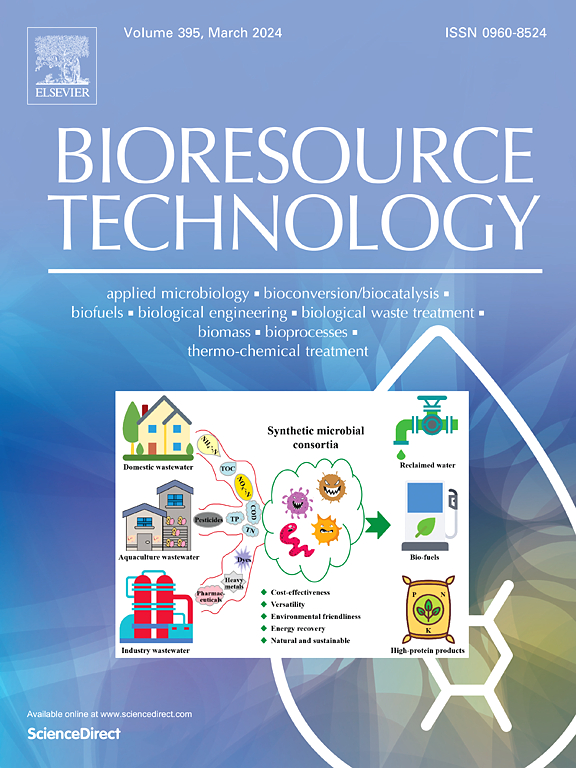Metagenomic and metabolomic insights into microalgal-bacterial symbiosis under low carbon-to-nitrogen ratios
IF 9
1区 环境科学与生态学
Q1 AGRICULTURAL ENGINEERING
引用次数: 0
Abstract
Microalgal-bacterial symbiotic system (MBSS) is expected to efficiently treat ammonia nitrogen (NH4+-N) wastewater at low carbon-to-nitrogen ratio (CNR). In this study, MBSS was constructed and operated at CNRs of 0, 2, and 4 for 36 days, named as L (low CNR), M (medium CNR), and H (high CNR). Microbial interaction mechanisms were explored through metagenomics and non-targeted metabolomics. The average NH4+-N removal efficiencies of L, M, and H were 9.2 ± 4.3 %, 33.6 ± 10.9 %, and 51.6 ± 14.1 %, respectively. CNR significantly influenced NH4+-N removal. Metagenomics and metabolomics showed that bacteria dominate MBSS, with phylum Pseudomonadota having a large advantage. Addition of simple organic carbon sources may inhibit the generation of complex organic compounds by microalgae, consequently leading to bacteria utilizing simple carbon sources. Certain key microorganisms, genes, and metabolites respond to different CNRs to regulate MBSS performance. This study provides new insights into MBSS nitrogen removal at low CNR.

低碳氮比下微藻-细菌共生的宏基因组学和代谢组学研究
微藻-细菌共生系统(MBSS)有望在低碳氮比(CNR)条件下高效处理氨氮(NH4+-N)废水。在本研究中,MBSS在CNR为0、2和4的情况下构建并运行36天,分别命名为L(低CNR)、M(中CNR)和H(高CNR)。通过宏基因组学和非靶向代谢组学探索微生物相互作用机制。L、M和H对NH4+-N的平均去除率分别为9.2±4.3%、33.6±10.9%和51.6±14.1%。CNR显著影响NH4+-N去除率。宏基因组学和代谢组学表明,细菌在MBSS中占主导地位,其中假单胞菌门具有较大优势。添加简单有机碳源可能会抑制微藻生成复杂有机化合物,从而导致细菌利用简单碳源。某些关键的微生物、基因和代谢物响应不同的CNRs来调节MBSS的性能。本研究为低CNR条件下MBSS脱氮提供了新的思路。
本文章由计算机程序翻译,如有差异,请以英文原文为准。
求助全文
约1分钟内获得全文
求助全文
来源期刊

Bioresource Technology
工程技术-能源与燃料
CiteScore
20.80
自引率
19.30%
发文量
2013
审稿时长
12 days
期刊介绍:
Bioresource Technology publishes original articles, review articles, case studies, and short communications covering the fundamentals, applications, and management of bioresource technology. The journal seeks to advance and disseminate knowledge across various areas related to biomass, biological waste treatment, bioenergy, biotransformations, bioresource systems analysis, and associated conversion or production technologies.
Topics include:
• Biofuels: liquid and gaseous biofuels production, modeling and economics
• Bioprocesses and bioproducts: biocatalysis and fermentations
• Biomass and feedstocks utilization: bioconversion of agro-industrial residues
• Environmental protection: biological waste treatment
• Thermochemical conversion of biomass: combustion, pyrolysis, gasification, catalysis.
 求助内容:
求助内容: 应助结果提醒方式:
应助结果提醒方式:


